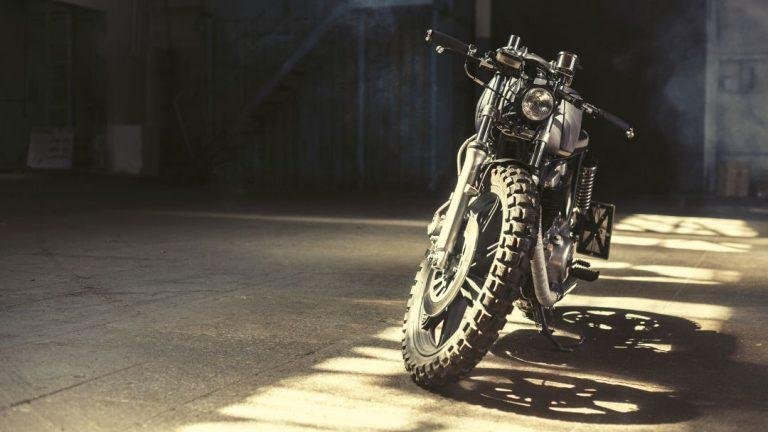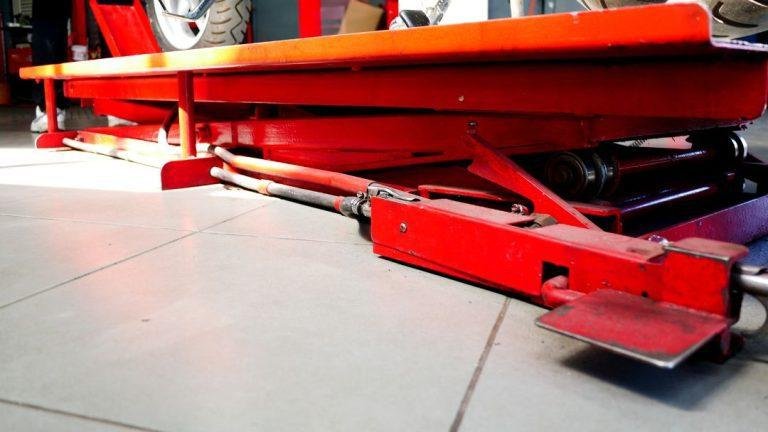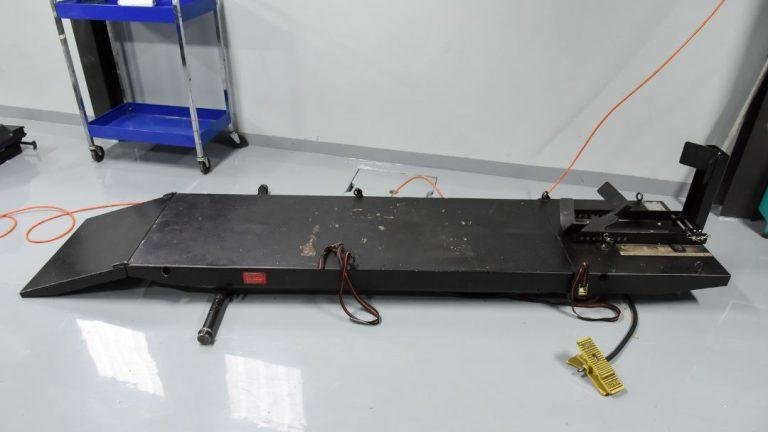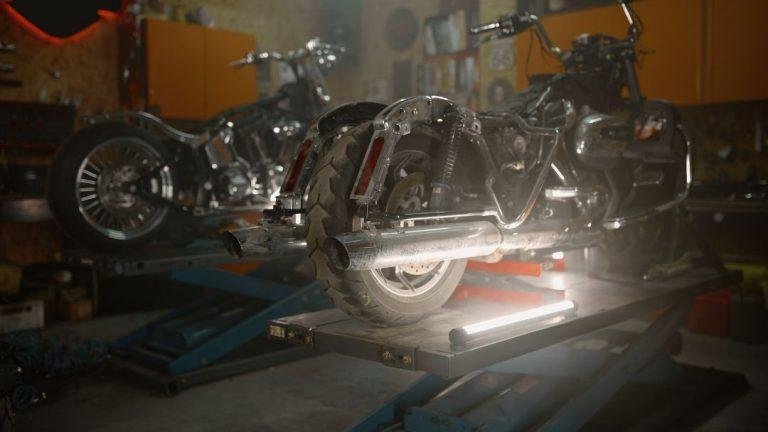Motorcycle lifts are an often overlooked yet essential tool for both professional and home mechanics alike. By providing a safe, efficient means to raise a motorcycle to a comfortable working height, they transform the difficult task of servicing and maintenance into a far more manageable one.
Understanding the nature and function of these devices helps to maximize their utility and ensure user safety.
What are Motorcycle Lifts?
Motorcycle lifts, as the name suggests, are devices designed to lift motorcycles off the ground. Their design generally comprises a flat platform to support the bike, a lifting mechanism, and a safety lock system. While they share similarities with car lifts, they are specifically tailored to accommodate the size, weight, and stability requirements of motorcycles.
The benefits of motorcycle lifts are manifold. Most importantly, they afford mechanics the convenience of inspecting and servicing a bike at eye level, negating the need for awkward, uncomfortable, and potentially harmful body positions. Additionally, they are also used for safe and space-efficient motorcycle storage.
Components of a Motorcycle Lift
A typical motorcycle lift is composed of several integral parts:
- Lifting Platform: This is the surface onto which the motorcycle is placed. It is often covered with non-slip material and can feature wheel vices and tie-down points for additional stability.
- Hydraulic or Mechanical System: This is the driving force of the lift, responsible for raising and lowering the platform. Hydraulic systems use fluid pressure, while mechanical systems often use a screw or scissor mechanism.
- Safety Lock Mechanism: This crucial feature ensures that the lift remains securely in position once raised, preventing accidental descent and ensuring the safety of both the motorcycle and the user.
- Adjustable Heights and Ramps: Many lifts offer adjustable heights to cater to different tasks and user preferences. Ramps, on the other hand, allow for easy mounting and dismounting of the motorcycle.
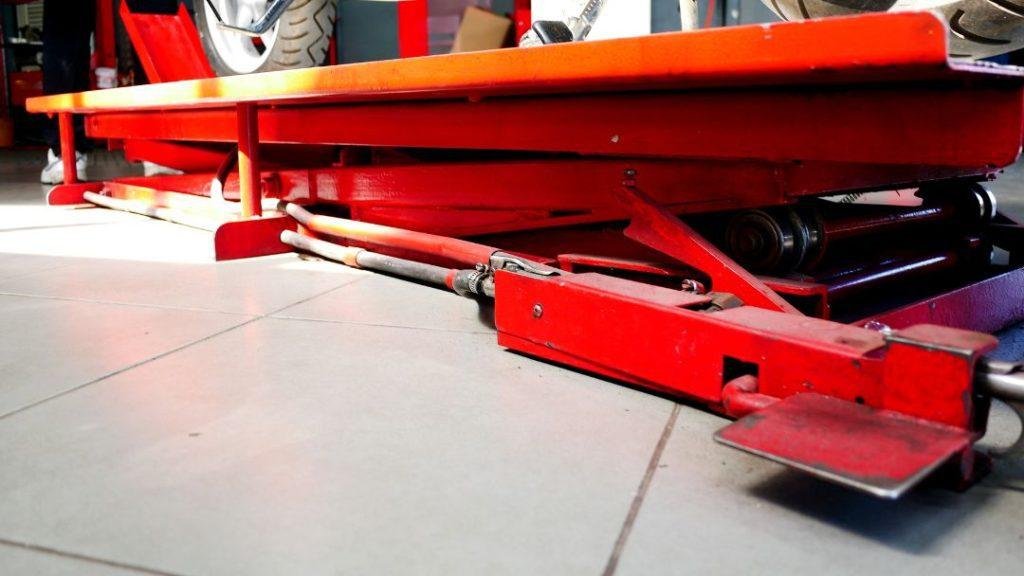
How Do Motorcycle Lifts Work?
Motorcycle lifts operate based on fundamental principles of physics, specifically those relating to force and pressure. Hydraulic lifts, for example, employ Pascal’s principle, which states that pressure applied to a fluid in a closed system is transmitted equally in all directions. Mechanical lifts, on the other hand, use simple machines such as screws or levers to amplify force.
To illustrate the operation of a motorcycle lift:
- Positioning and Securing the Motorcycle: The motorcycle is rolled onto the lift platform and secured in place, often using wheel vices or straps.
- Operating the Lifting Mechanism: The lifting mechanism is then activated. In a hydraulic lift, this involves pumping fluid to create pressure, which in turn raises the platform. In a mechanical lift, turning a screw or operating a lever achieves the same result.
- Engaging the Safety Lock and Adjusting the Height: Once the desired height is reached, the safety lock is engaged to secure the lift in place. The height can be adjusted to suit the specific task at hand.
- Lowering the Lift Safely: When work is complete, the safety lock is disengaged, and the lift mechanism is carefully operated to lower the bike safely back to the ground.
Types of Motorcycle Lifts and How They Work
Motorcycle lifts can largely be categorized into three types: hydraulic, mechanical, and air-powered lifts. Each has its unique operating mechanism and set of pros and cons.
Hydraulic Motorcycle Lifts
Hydraulic lifts utilize the principle of fluid mechanics. The operator pumps a handle, which creates pressure in a fluid-filled cylinder. This pressure is then used to raise the lift platform. These lifts are renowned for their strength and smooth operation, although they may require more maintenance
than their counterparts due to the complexity of the hydraulic system.
Mechanical (Screw or Scissor) Motorcycle Lifts
Mechanical lifts typically use a screw or scissor mechanism to raise the platform. The operator turns a screw or lever, which extends the lift through mechanical advantage. These lifts are typically robust, reliable, and require less maintenance than hydraulic lifts. However, they may not offer the same level of smooth operation or lifting capacity.
Air-Powered Motorcycle Lifts
Air-powered lifts use the principle of pneumatics to operate. Air pressure is used to extend a cylinder, which in turn raises the lift platform. These lifts are often lightweight and easy to operate but may require an external air supply and can be noisy.
Safety Measures to Consider When Using Motorcycle Lifts
Safety is paramount when operating a motorcycle lift. Adhering to the following guidelines ensures a safe working environment:
- Always engage the safety lock once the desired height is reached. This prevents the accidental descent of the lift.
- Ensure that the motorcycle’s weight is evenly distributed on the lift platform. An unbalanced load can cause the lift and motorcycle to topple over.
- Do not exceed the lift’s weight capacity. Overloading the lift can lead to mechanical failure and pose serious safety risks.
- Regularly maintain and inspect the lift. Regular checks ensure that the lift is in good working condition and can help to identify potential problems before they cause accidents.
Conclusion
Motorcycle lifts are an indispensable tool in the world of motorcycle maintenance and repair. By understanding their function and operation, users can ensure a safe, efficient, and convenient work environment.
By maintaining and using these lifts properly, they provide invaluable service over many years.


